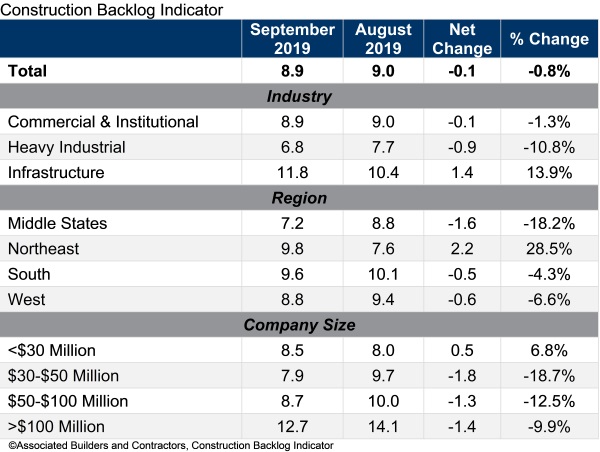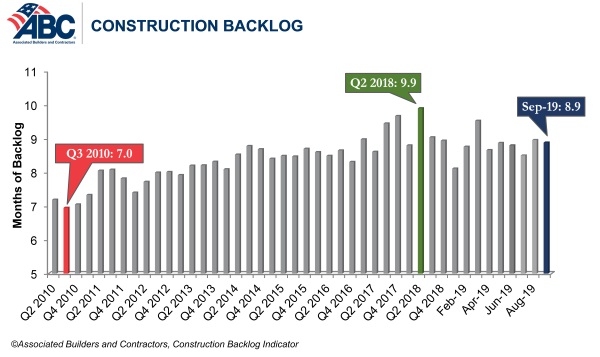
ABC’s Construction Backlog Indicator Slips in September
Associated Builders and Contractors reported today that its Construction Backlog Indicator fell to 8.9 months in September 2019, down 0.1 months or 0.8% from August 2019 when CBI stood at nine months.
“Today’s backlog reading indicates that pre-existing trends will remain in place,” said ABC Chief Economist Anirban Basu. “In recent months, public construction spending has fueled industry spending growth, while private construction spending has steadily faded. This mirrors ABC’s backlog indicator segment data, as infrastructure contractors collectively reported a rising backlog while other segments declined compared to the Spring 2018 peak.
“Backlog associated with the infrastructure segment rose massively in September to 11.8 months, a nearly 14% increase,” said Basu. “State and local government finances continue to be buoyed by an economy producing plenty of jobs, higher incomes, a sturdy consumer sector, a booming stock market and rising property values in much of the nation. Among other things, this produces greater income, sales and property tax collections, which in turn increases funds available for publicly financed construction. Incredibly low interest rates help state and local governments leverage improved cash flow into support for substantial projects, including in categories such as water supply, transportation and public safety.
“Predictably, the largest monthly decline was observed in the heavy industrial category,” said Basu. “Many economists agree that the nation’s manufacturing sector is weakening. Investment among energy suppliers has also been hampered recently by a combination of low and volatile energy prices, geopolitical events and uncertainty regarding the future regulatory environment. In addition, commercial construction has also been weakening, as many investors are concerned about a slowing economy, excess supply in certain commercial segments and rising costs of construction service delivery given the shortage of skilled workers.”

Click here for historical CBI data. CBI methodology can be found here.






